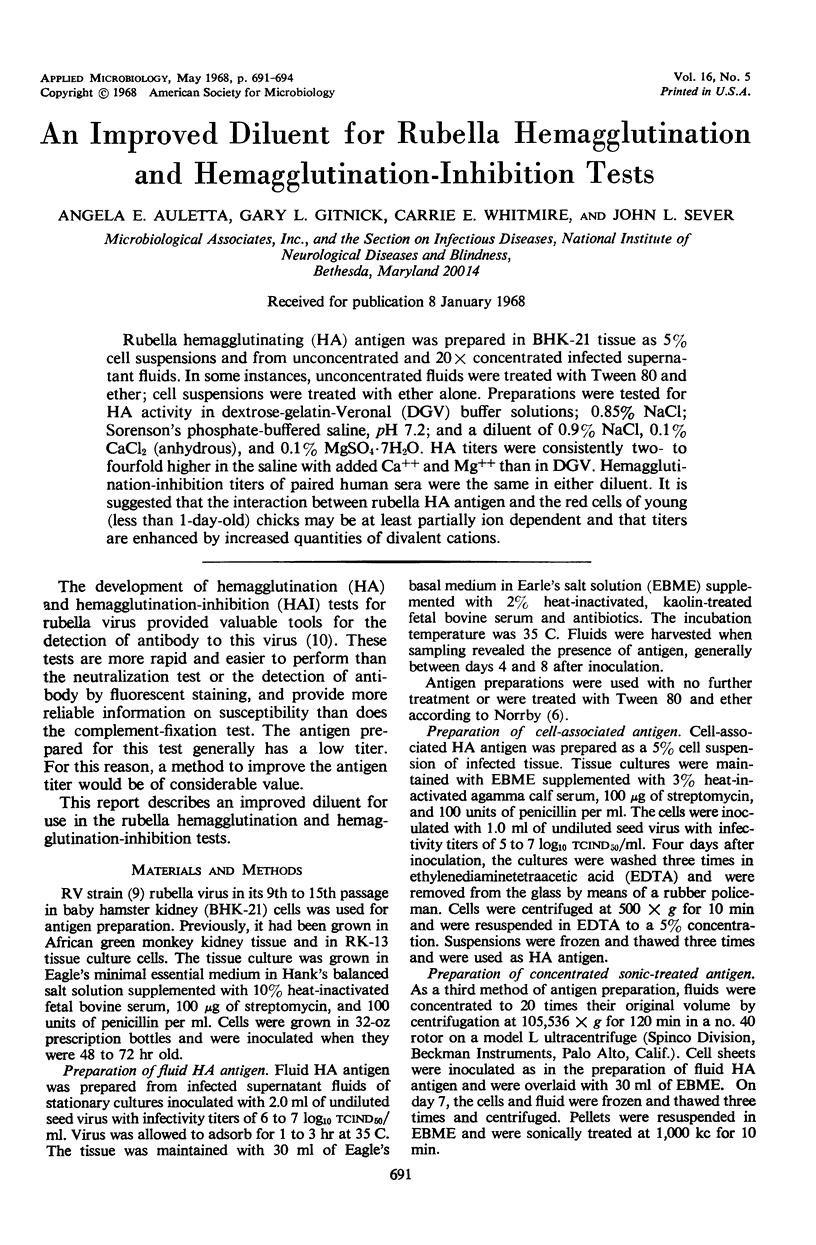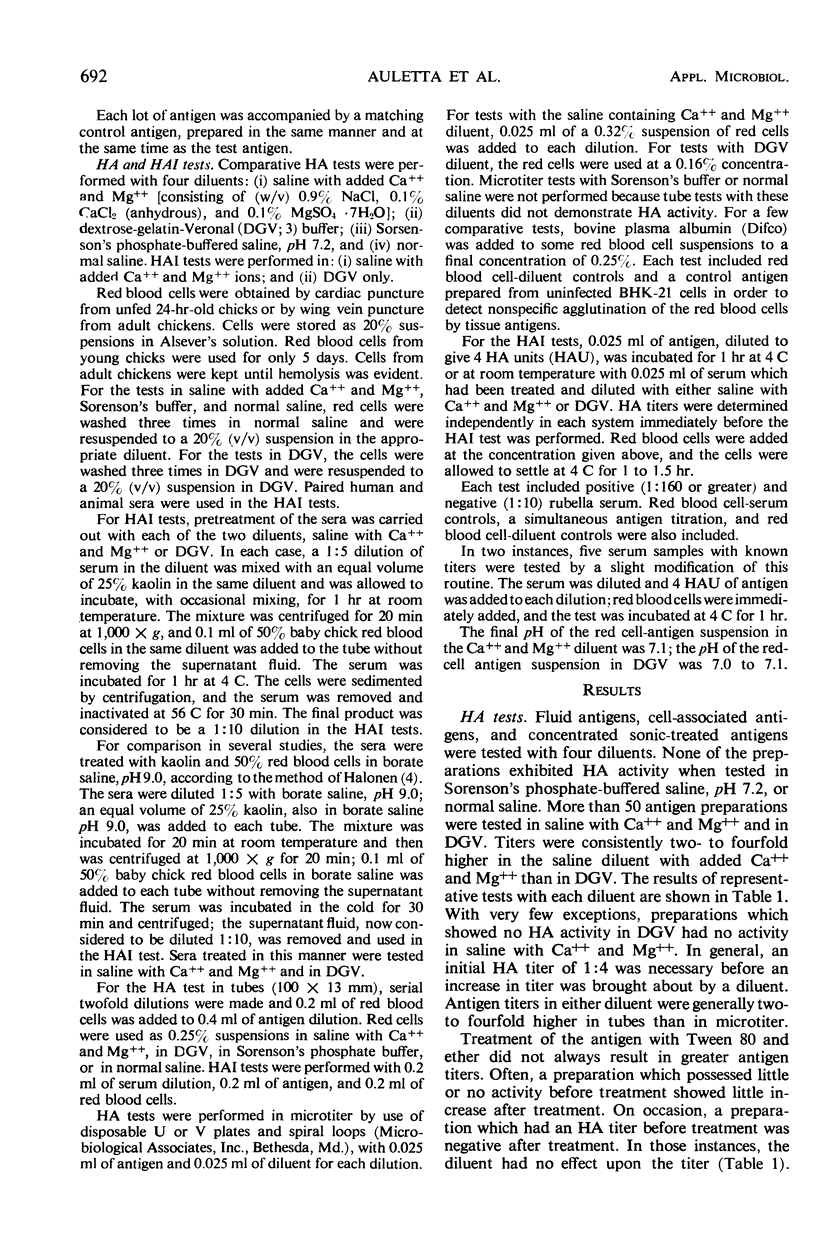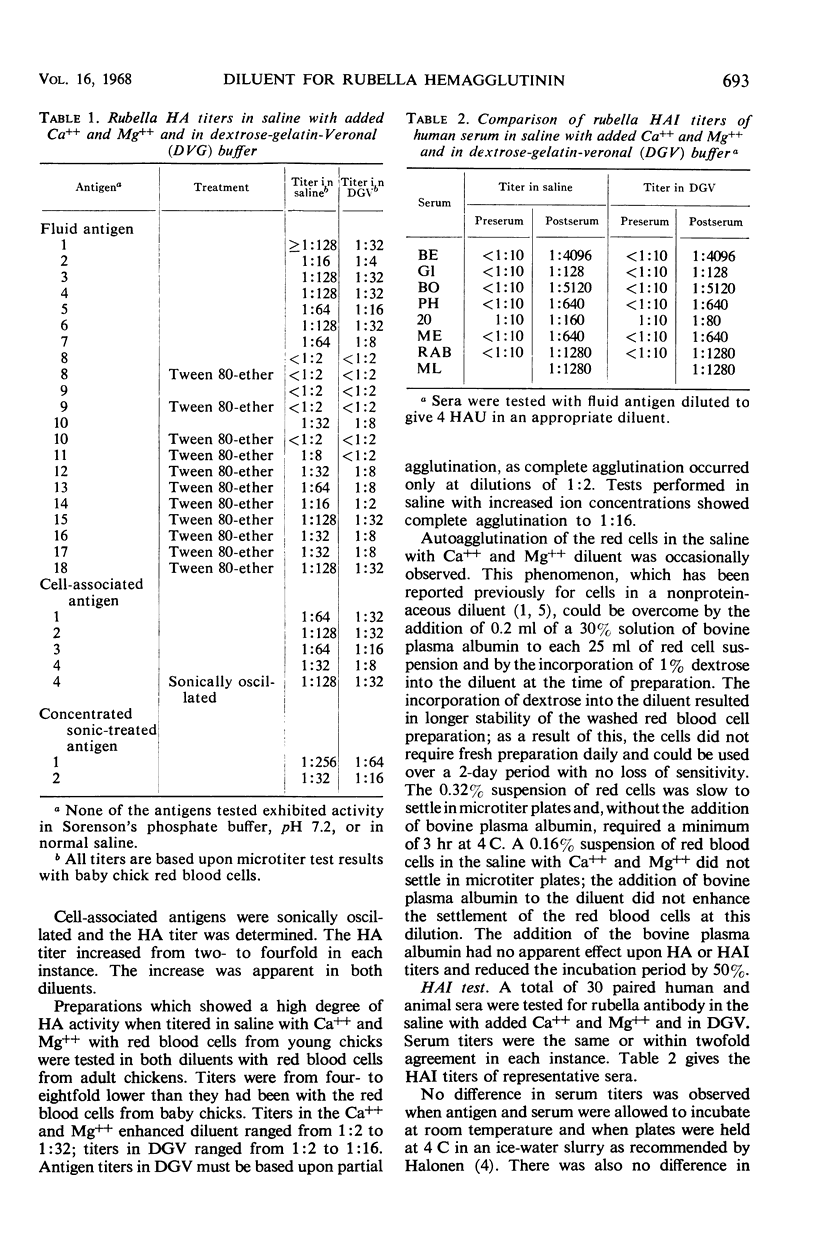Abstract
Rubella hemagglutinating (HA) antigen was prepared in BHK-21 tissue as 5% cell suspensions and from unconcentrated and 20× concentrated infected supernatant fluids. In some instances, unconcentrated fluids were treated with Tween 80 and ether; cell suspensions were treated with ether alone. Preparations were tested for HA activity in dextrose-gelatin-Veronal (DGV) buffer solutions; 0.85% NaCl; Sorenson's phosphate-buffered saline, pH 7.2; and a diluent of 0.9% NaCl, 0.1% CaCl2 (anhydrous), and 0.1% MgSO4·7H2O. HA titers were consistently two- to fourfold higher in the saline with added Ca++ and Mg++ than in DGV. Hemagglutination-inhibition titers of paired human sera were the same in either diluent. It is suggested that the interaction between rubella HA antigen and the red cells of young (less than 1-day-old) chicks may be at least partially ion dependent and that titers are enhanced by increased quantities of divalent cations.
Full text
PDF



Selected References
These references are in PubMed. This may not be the complete list of references from this article.
- Adler H. E., Da Massa A. J. Use of formalinized Mycoplasma gallisepticum antigens and chicken erythrocytes in hemagglutination and hemagglutination-inhibition studies. Appl Microbiol. 1967 Mar;15(2):245–248. doi: 10.1128/am.15.2.245-248.1967. [DOI] [PMC free article] [PubMed] [Google Scholar]
- CLARKE D. H., CASALS J. Techniques for hemagglutination and hemagglutination-inhibition with arthropod-borne viruses. Am J Trop Med Hyg. 1958 Sep;7(5):561–573. doi: 10.4269/ajtmh.1958.7.561. [DOI] [PubMed] [Google Scholar]
- Halonen P. E., Ryan J. M., Stewart J. A. Rubella hemagglutinin prepared with alkaline extraction of virus grown in suspension culture of BHK-21 cells. Proc Soc Exp Biol Med. 1967 May;125(1):162–167. doi: 10.3181/00379727-125-32038. [DOI] [PubMed] [Google Scholar]
- LANDY M., TRAPANI R. J. A hemagglutination test for plague antibody with purified capsular antigen of Pasteurella pestis. Am J Hyg. 1954 Mar;59(2):150–156. doi: 10.1093/oxfordjournals.aje.a119629. [DOI] [PubMed] [Google Scholar]
- NORRBY E. Hemagglutination by measles virus. 4. A simple procedure for production of high potency antigen for hemagglutination-inhibition (HI) tests. Proc Soc Exp Biol Med. 1962 Dec;111:814–818. doi: 10.3181/00379727-111-27930. [DOI] [PubMed] [Google Scholar]
- PUCK T. T., GAREN A., CLINE J. The mechanism of virus attachment to host cells. I. The role of ions in the primary reaction. J Exp Med. 1951 Jan;93(1):65–88. doi: 10.1084/jem.93.1.65. [DOI] [PMC free article] [PubMed] [Google Scholar]
- SEVER J. L., SCHIFF G. M., TRAUB R. G. Rubella virus. JAMA. 1962 Nov 10;182:663–671. [PubMed] [Google Scholar]
- Stewart G. L., Parkman P. D., Hopps H. E., Douglas R. D., Hamilton J. P., Meyer H. M., Jr Rubella-virus hemagglutination-inhibition test. N Engl J Med. 1967 Mar 9;276(10):554–557. doi: 10.1056/NEJM196703092761006. [DOI] [PubMed] [Google Scholar]


